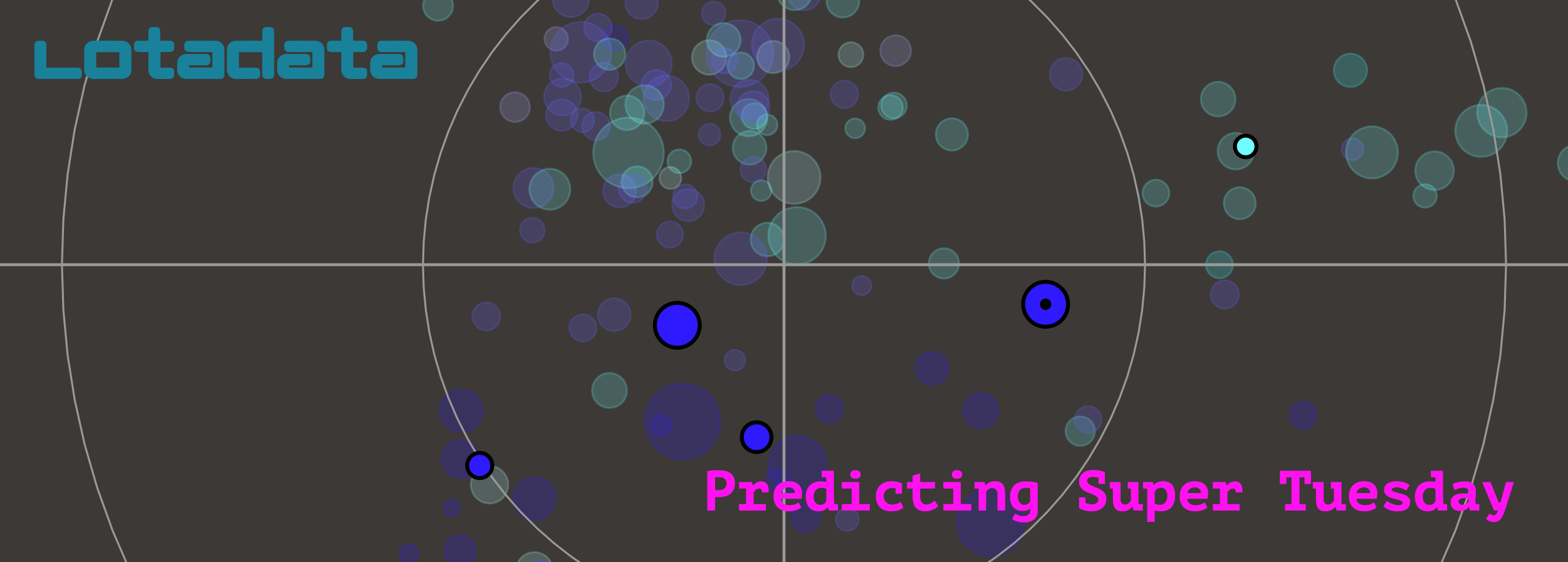When the going gets tough, Camels outlast Unicorns
The Bactrian Camel isn't pretty to the conventional eye. With two oddly large


The data scientists at CITYDATA.ai have conjured up their analytical super powers to make bold predictions for Super Tuesday.
Today’s the day. Can anyone take down Trump? Will Bernie's populist revolution flare up or flame out? The primaries of Super Tuesday create a unique political moment that can bolster or destroy a presidential campaign. So in this election, one that has defied both political expertise and common sense, how can we hope to predict Super Tuesday's results?
Well, we can start with past outcomes. Where have candidates succeeded and why? Looking at Iowa, New Hampshire, Nevada and South Carolina, we can discern key demographic patterns. On the Republican side, Donald Trump has done better with white, low income, poorly educated groups than his opponents. On the Democratic side, Hillary Clinton has received far, far more of the African-American vote than Bernie Sanders.
The main takeaway is that there are distinct, dividing lines. And the most important lines are those of education, race, ethnicity and employment. We can combine these demographic splits with attributes like home vacancy, income levels and poverty to infer situations like distress and sentiments like discontent and make a reasonable forecast about the future, given how candidates performed with such groups in the past.
To make estimates, we used LotaData's APIs to gather all necessary demographic information from the counties that have already voted in Iowa, New Hampshire, Nevada and South Carolina, as well as the upcoming Super Tuesday counties. Then, we zoomed into a Super Tuesday county, such as Dallas County in Texas, and searched to find the most demographically similar counties that had already voted in the 2016 primaries. This analysis provided an understanding of how certain demographic mixes are tied to certain candidates.
In the graphs below, we have targets centered on the median level of education and median employment rate among counties that have voted. In the blue target graph, we can find Dallas County (black dot in the center of a blue circle) and see that it has been marked for Hillary Clinton. Its 10 most similar counties are outlined in black.

Now, this graph only conveys 3 dimensions of the 9 used to determine the similarity between counties, but at a glance, it already shows some voting group divisions. In the top-right quadrant, the light blue bubbles represent the highly educated, relatively well-employed, whiter counties that have already voted in 2016 primaries. They are heavily skewed toward Bernie Sanders. In the opposite diagonal, we see several deep blue dots with a significant bias toward Hillary Clinton.

The fiery Republican graph shows a similar, but stronger divide where Trump dominates the lower left quadrant (less educated, minority, under-employed), yet still grabs much of the attention in the three other quadrants. As we move to the extremes of the highly educated counties, we see the success of Marco Rubio, favorite of the GOP elites. Lastly, Ted Cruz carves a corner for himself amongst the less educated yet well employed counties. Based on our analysis, neither Trump opponent has managed the cross-sectional appeal necessary to win majorities and win delegates.

Building upon the demographic similarities we found between Super Tuesday counties and past counties, we made some simple estimates and predictions for tonight’s results. The national maps above and below project county-by-county winners for all the states voting on Super Tuesday. While Bernie seems to have a great shot in Oklahoma and Vermont, every other state is an big uphill battle. On the Republican side, we are calling Texas for Ted Cruz and Minnesota for Marco Rubio. Nevertheless, Donald Trump's support through Southern and Northeastern states is seeming insurmountable and could expand into a full sweep tonight. All in all, we are excited to see the end result of an unpredictable Super Tuesday featuring some of the most intriguing contests in recent history.
